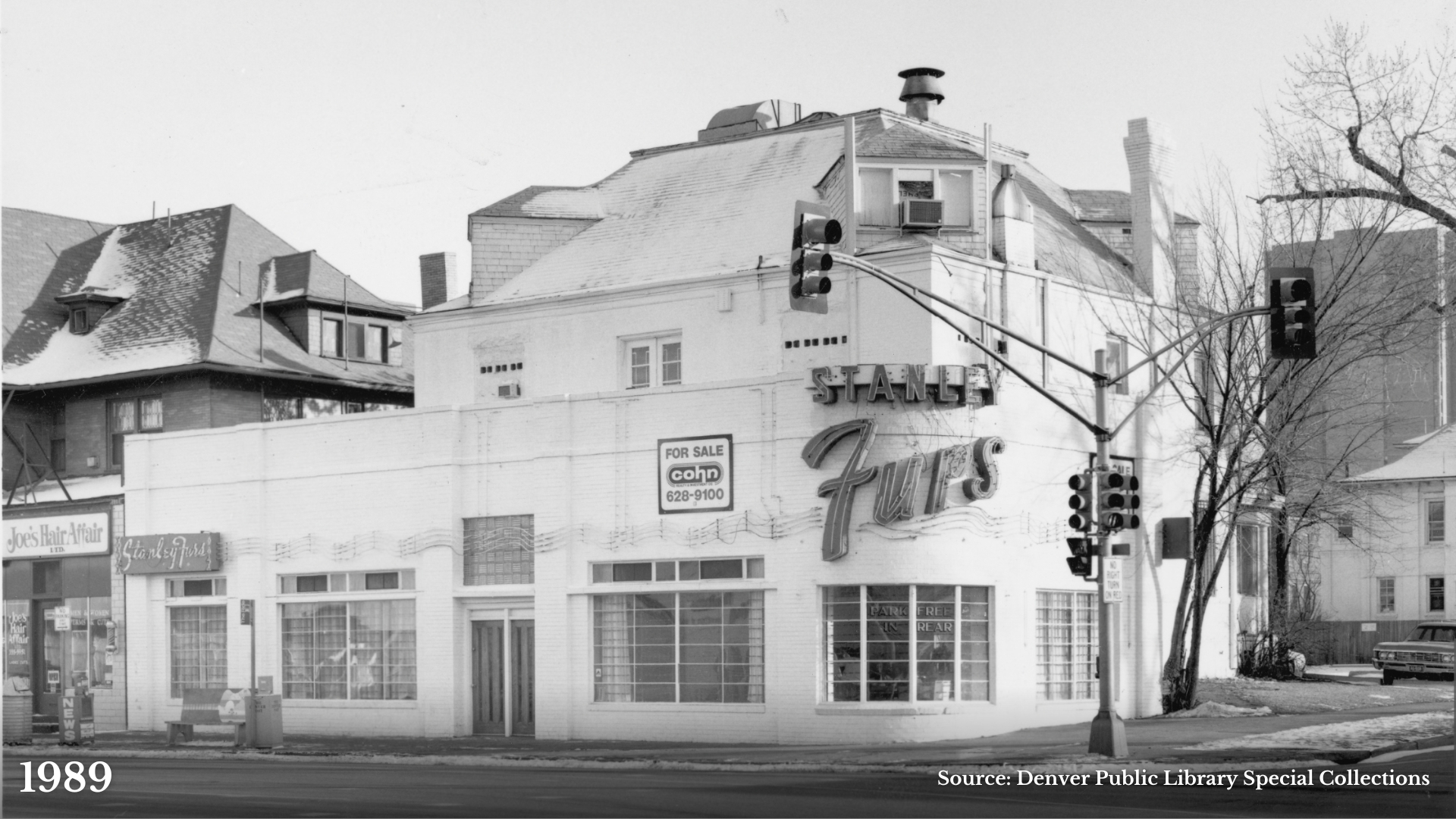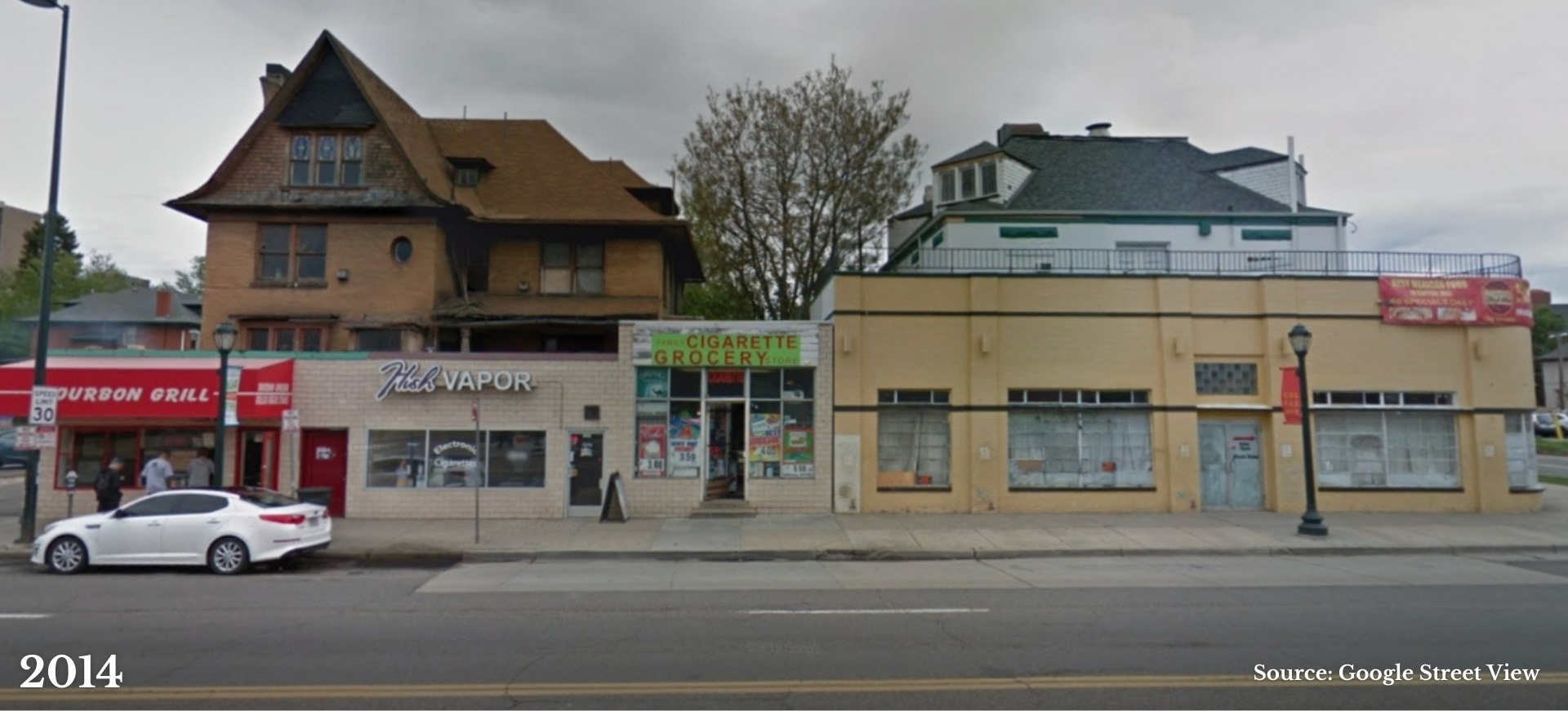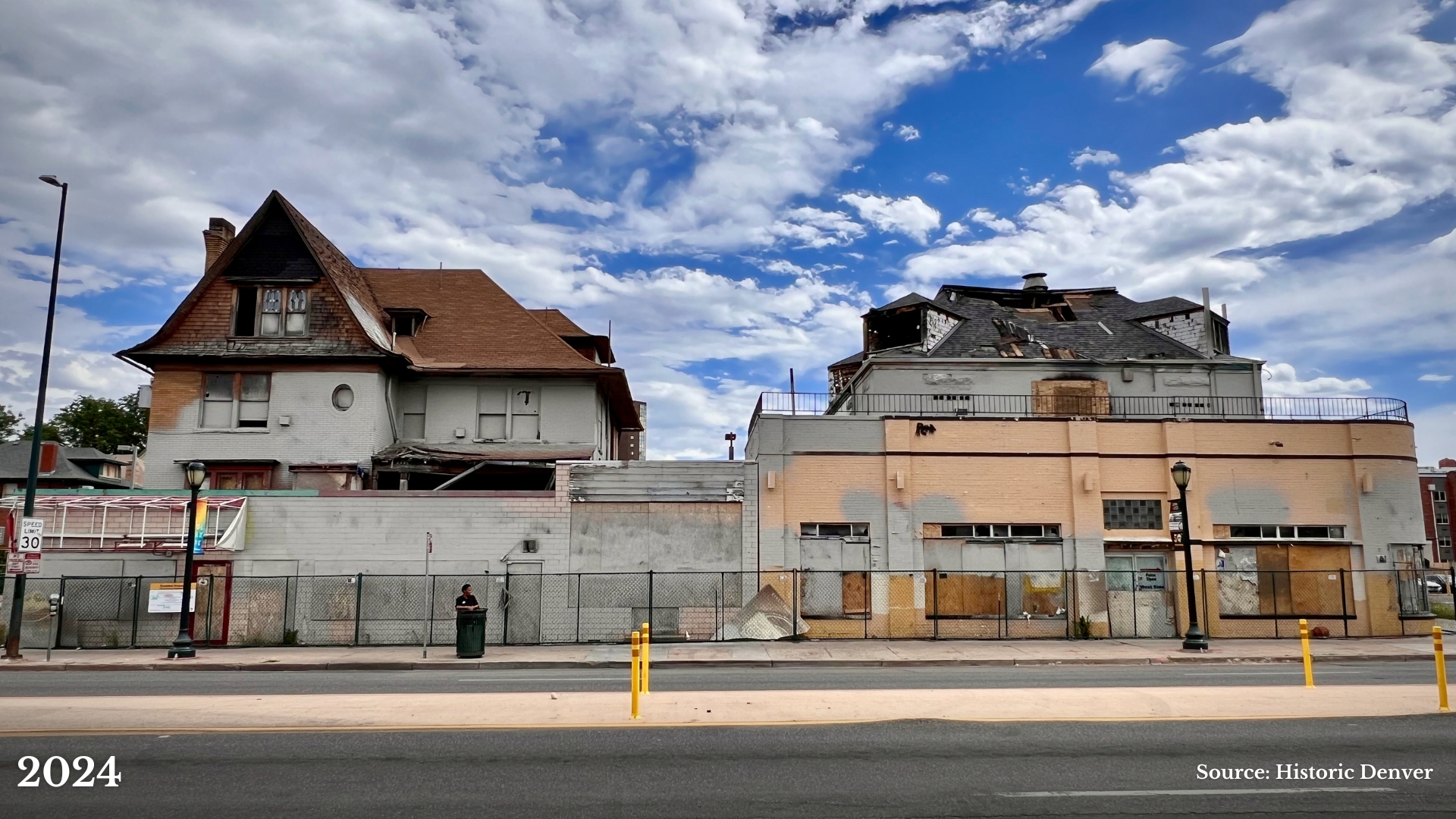Preserving Denver’s Legacy: Why the Colfax Mansion Decision Matters
On December 17, 2024, Denver’s Landmark Preservation Commission approved the demolition of two historic mansions on Colfax Avenue: 1600 and 1618 East Colfax. Once part of the vibrant Wyman Historic District, these 19th-century buildings represented a vital link to the city’s past. Their decline, however, was not inevitable—it was the result of neglect, insufficient enforcement, and a lack of accountability.
At Historic Denver, we opposed this decision, not just to save these two buildings but to defend the integrity of the landmark designation process itself. The protections afforded to these mansions were the strongest available under local preservation law, established by the community to safeguard Denver’s unique character. Allowing their demolition, after years of inaction by the property owner, sets a dangerous precedent that threatens the future of historic preservation citywide.
In 2018, there was strong community support to save these buildings, and tools such as state tax credits and grants could have helped offset rehabilitation costs. But the owner, Pando Holdings, failed to secure and maintain the properties, allowing them to deteriorate to the point of crisis. By 2020, they were added to the city’s “Neglected and Derelict Buildings” list, yet no meaningful enforcement action was taken. This neglect culminated in the March 2024 fire that severely damaged one of the mansions.
We understand the community’s frustrations. No one should have to live near unsafe, neglected properties, which attract antisocial behavior. But this situation highlights systemic failures. Rewarding neglect with demolition undermines the protections our city has relied on for decades to preserve its history. While some point to Denver’s housing needs, it’s important to note that only 4% of the city’s built environment is landmarked. Preservation is not the barrier to housing—it’s a crucial part of ensuring Denver’s identity and character, as well as naturally occurring affordable housing, remain intact for future generations.
Opposing Demolition of 1600 & 1618 East Colfax Avenue
1600 and 1618 East Colfax were unoccupied for several years, with little effort made by the property owner to secure and maintain the structures. In March 2024, a fire broke out in 1600 East Colfax, severely damaging the interior. 1618 East Colfax was largely unharmed. Later that year, the property owner petitioned the Landmark Preservation Commission for permission to demolish both buildings. Initially, this request was unanimously rejected by the commission, as both mansions were integral to the Wyman Historic District. Unfortunately, in December 2024, after years of neglect and minimal enforcement, the commission approved their demolition.
The property owner cited public health and safety concerns as justification for demolition. However, these safety concerns were a direct result of the owner’s failure to secure and protect the buildings, leaving them vulnerable to damage and deterioration.
For further reading, check out this Denverite article, providing background into the property owner’s previous attempt to demolish the buildings in 2018. The article also includes photographs of the buildings’ stunning interiors prior to their deterioration.
Why It Matters
1600 and 1618 East Colfax were “character contributing” structures in the Wyman Historic District, designated by the city council in 1993. Their presence was integral to the district’s historic character, and their demolition marks a loss of significant historical and architectural context.
In the 1890s, East Colfax was one of Denver’s most prestigious residential streets. 1600 East Colfax was home to architect George Williamson, whose designs, including East High School and Smiley Middle School, are landmarks throughout the city. These mansions were the last remaining historically protected large homes on East Colfax, providing insight into the transition of the corridor from a residential neighborhood to the commercial center it is today.
The Art Moderne shopfront additions on these buildings reflected a key trend in mid-20th-century Denver, when residential structures along busy streets were converted for commercial use. Together, the mansions represented both architectural and social histories of Denver.
Historic Denver’s Role
Historic Denver strongly opposed the demolition of 1600 and 1618 East Colfax. The property owner purchased these buildings in 2017, knowing their historic designation within the Wyman Historic District. Allowing their demolition undermines the strongest protections available for Denver’s historic buildings and creates a dangerous precedent for landmarked properties across the city.
We worked to bring local stakeholders and the property owner together to explore alternatives. Our understanding was that the property owner already had a nearly permitted plan to rehabilitate the mansions and construct a multistory residential structure on the property’s parking lot, creating much-needed housing while retaining the historic buildings. This plan, however, was never implemented.
Moving forward, Historic Denver remains committed to advocating for proactive policies and stronger enforcement mechanisms to prevent similar losses. The story of these mansions underscores the importance of preservation—not just for the past but for the future of Denver’s communities and character.
Your Support
Membership and donations go toward supporting important advocacy efforts like this one. Become a member of Historic Denver today to support future preservation efforts!
Updated January 8, 2025
Google Street View of 1600 & 1618 E. Colfax Ave from 2014 to 2024




